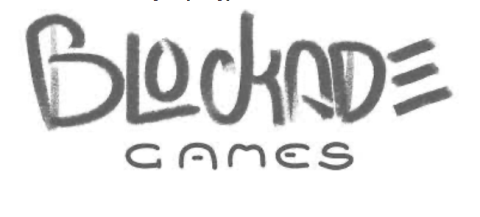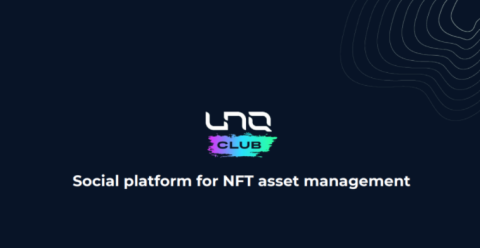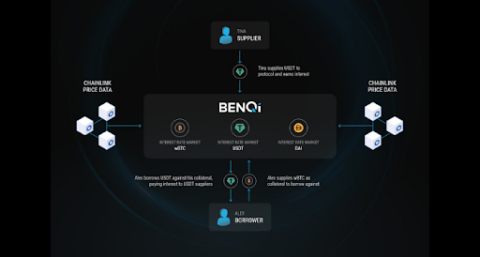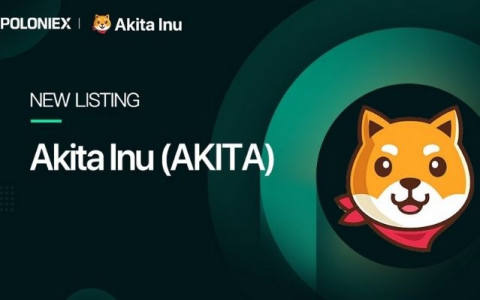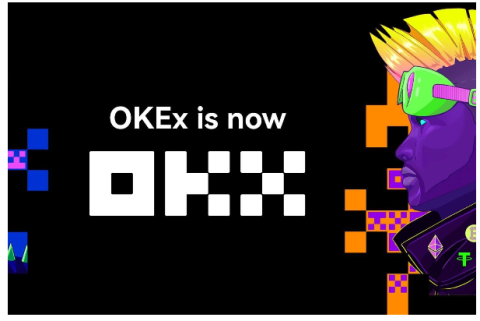What is thena? Discover the outstanding features of Thena and THE . token

Ngoài PancakeSwap, hệ sinh thái BNB Chain còn có một AMM khác có TVL đạt 150 triệu USD chỉ sau hai tháng ra mắt, dự án này được gọi là Thena.
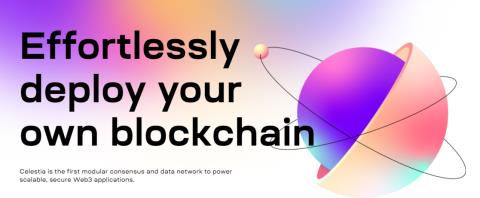
Celestia is a modular inbuilt data layer designed to use rollup technology (Layer-2 scaling solution on Ethereum). As a result, it can provide developers with a platform to build DApps at a lower cost but still fully ensure security and decentralization.
Celestia does not work like a typical Layer-1 blockchain , it just orders transactions, then verifies the data being published is available. By taking this approach, the project gains scalability, flexibility, and interoperability unmatched in previous blockchain designs.
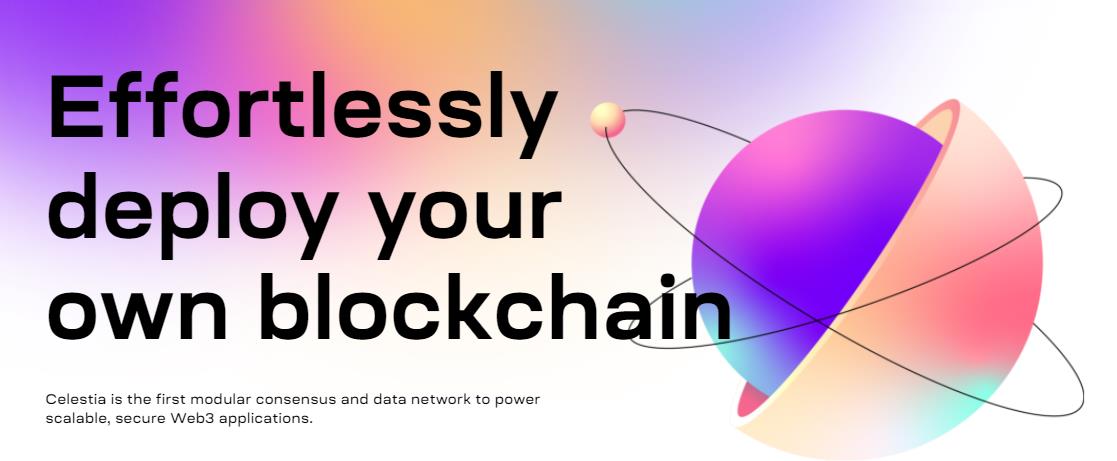
Celestia's long-term vision is to build a blockchain ecosystem with modular available data layers and execution tools that can be integrated with each other. The project team believes that this is the next generation of scalable blockchain architecture.
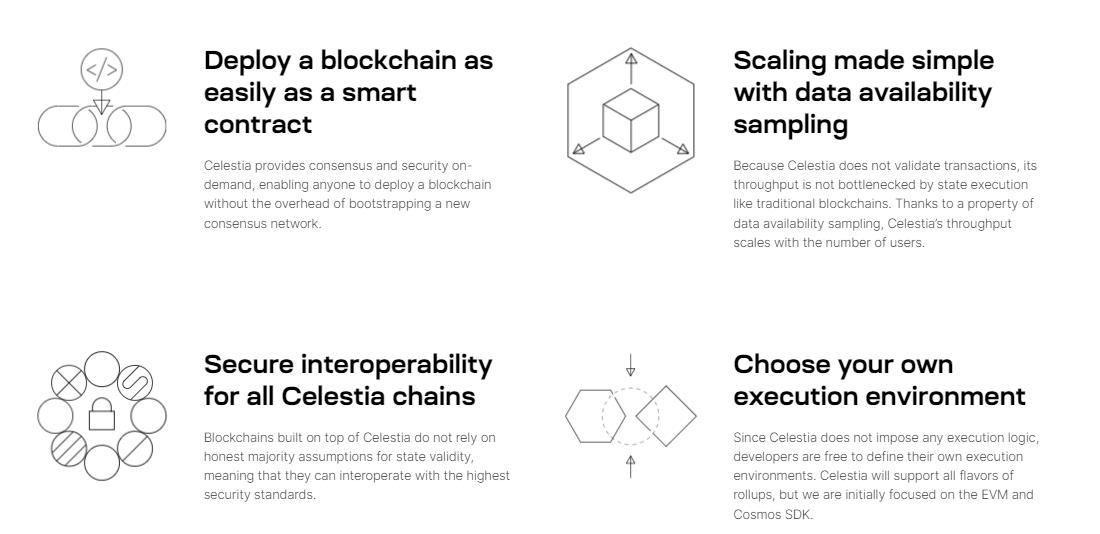
Deploying blockchain is as easy as smart contract
Celestia provides consensus and on-demand security, allowing anyone to deploy a blockchain without the cost of starting a new consensus network.
Easily scale up with sample data
Celestia does not validate transactions so its throughput is not congested when executing smart contracts like traditional blockchains. Thanks to data availability sampling, Celestia's throughput is always balanced by the number of users and easy to scale.
Safe Interoperability
Blockchains built on Celestia are interoperable with the highest security standards.
Execution Environment Options
Since Celestia does not impose any enforcement regulations, developers are free to define their own smart contract execution environment. Celestia will support all rollups, but initially the project will focus on EVM ( Ethereum Virtual Machine ) and Cosmos SDK.
Separation of consensus and implementation layers
Today's standard "world computer" blockchains make consensus commits and execute smart contracts at the same time while Celestia separates them. The project provides a consensus layer that integrates a plugin (plug-in) mechanism so that programmers can implement their own implementation classes. This allows for more customization and sovereignty for applications built on Celestia.
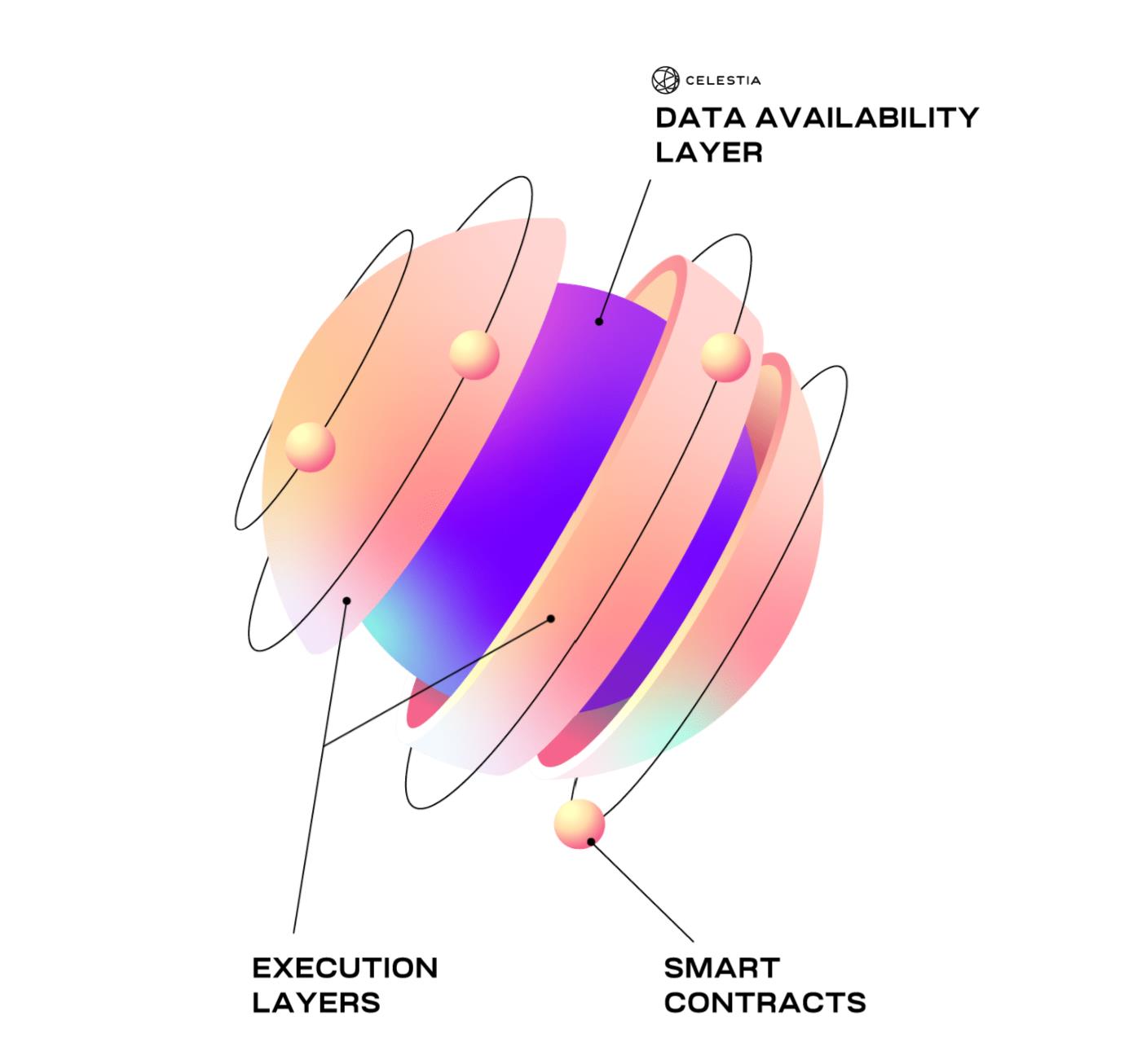
Data availability proof
Celestia uses a two-way reed-solomon encryption scheme to encrypt data into blocks so that just verifying a small data sample is enough to be sure that the entire block has been successfully produced. If the data is encrypted incorrectly, the network will be notified immediately.
Rollup for off-chain execution
Celestia is designed to be fully compatible with rollup scaling solutions. It takes data processing off-chain, and then relies on a base chain to calculate consensus and data availability.
Make sure the light client is safe for cross-chain interaction
Cross-chain interoperability that depends on the light client is generally insecure because they assume that the majority of the data is honest. The light clients in Celestia will not make such assumptions, it will only unlock cross-chain interoperability when determined to be truly secure. Connecting chains would be as simple as deploying a smart contract.
The development roadmap of Celestia announced by the project team is as follows:

Development team
Celestia's development team consists of 14 members, all of whom are experienced in building and scaling blockchain from projects like Ethereum , Cosmos , Harmony . They share a common goal of finding a more efficient way to build blockchains, thereby developing secure and easily scalable decentralized applications.
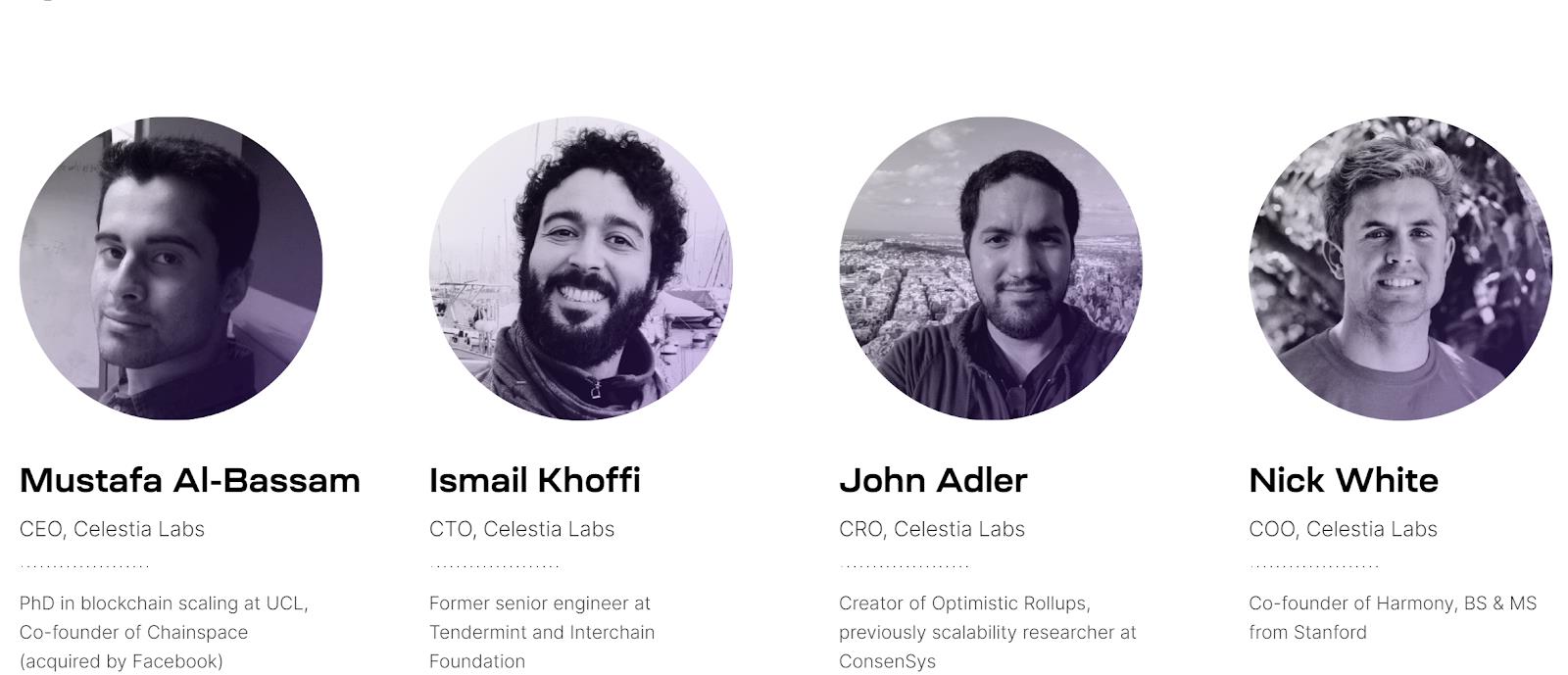
The most important members of the project development team are:
Project advisor
Celestia has a total of 7 advisors. They are all excellent experts in the field of cryptocurrencies. Among the most prominent are:
Ethan Buchman: Ethan is the co-founder of two famous projects: Tendermint, Cosmos.
Zaki Manian: Zaki is one of the co-creators of the IBC protocol and the first contributors to the Cosmos ecosystem.
James Prestwich: James is the Co-founder of Summa (a project that provides interoperability between blockchains acquired by Celo).
George Danezis: George is Professor of Privacy and Security Engineering at the University of London.
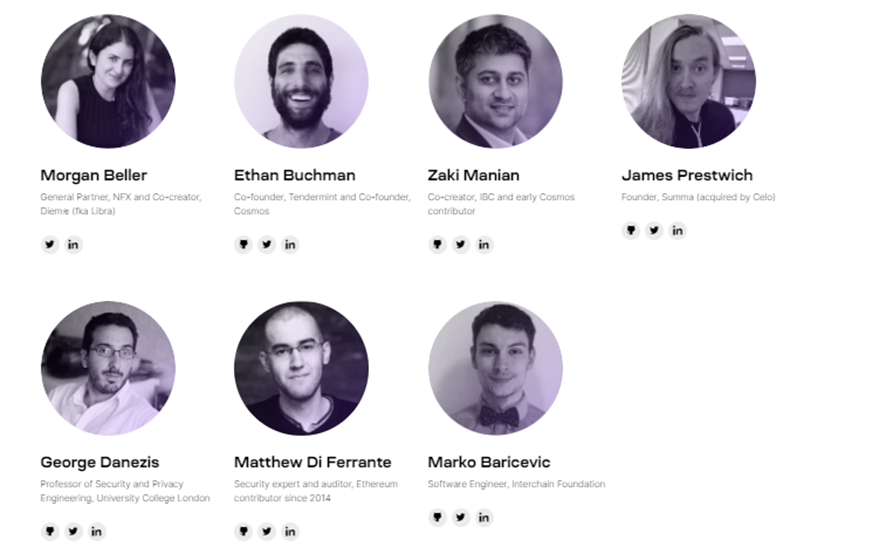
In March 2021, Celestia successfully raised US$1.5 million in a Seed Round funding round with the participation of many world-famous investment funds such as: Interchain Foundation, Binance Labs, Maven 11 Capital, KR1 , Signature Ventures, Divergence Ventures, Dokia Capital, P2P Capital, Tokonomy, Cryptium Labs…

Currently the project does not have a token, according to the announcement on the official website, in the future Celestia will issue a token to secure the network through the Proof of Stake mechanism and use it for the payment of transaction fees on the network. net.
TraderH4 team will update as soon as there is new information from the project. Investors can read more related news at media channels such as:
Website | Twitter | Telegram | D iscord
From the overview of the Celestia project, it can be seen that the development team was ahead of its time in terms of data availability and a modular blockchain stack. Meanwhile, other Layer-1 blockchain projects, such as Polygon, are still in the process of finding ways to modularize data. If the project is successful and on track, Celestia will be a pioneer in Layer-1 blockchain scaling solutions.
Ngoài PancakeSwap, hệ sinh thái BNB Chain còn có một AMM khác có TVL đạt 150 triệu USD chỉ sau hai tháng ra mắt, dự án này được gọi là Thena.
Blockade Games provides a platform that allows developers to create blockchain games. In addition, Blockade Games also creates many interesting free games.
UNQ Club is a project that provides a blockchain platform that allows investors to collect and manage existing NFT assets.
BENQI is one of the important pieces of the Avalanche ecosystem. Join TraderH4 to find out what BENQI (QI) is as well as detailed information about the QI token.
In addition to a cryptocurrency storage wallet, SafePal is also known to many investors for its SFP tokens and airdrop events with attractive rewards.
The fever from Akita Inu in the Crypto market in the past time has created a great buzz along with the rapid development of the "dog house token".
What is IoTeX? This is a blockchain built and developed in conjunction with the Internet of Things (IoT). Join TraderH4 to learn this article.
What is OKB? OKB is an exchange coin of OKX and the OKX Chain blockchain. Let's learn about OKX and OKB exchanges with TraderH4 in this article.
DROPP GG brings an innovative and novel idea to provide an NFT mint platform based on geographies outside of the real world.
CronaSwap is a DEX built on Cronos Chain, which has a similar model to Uniswap.
